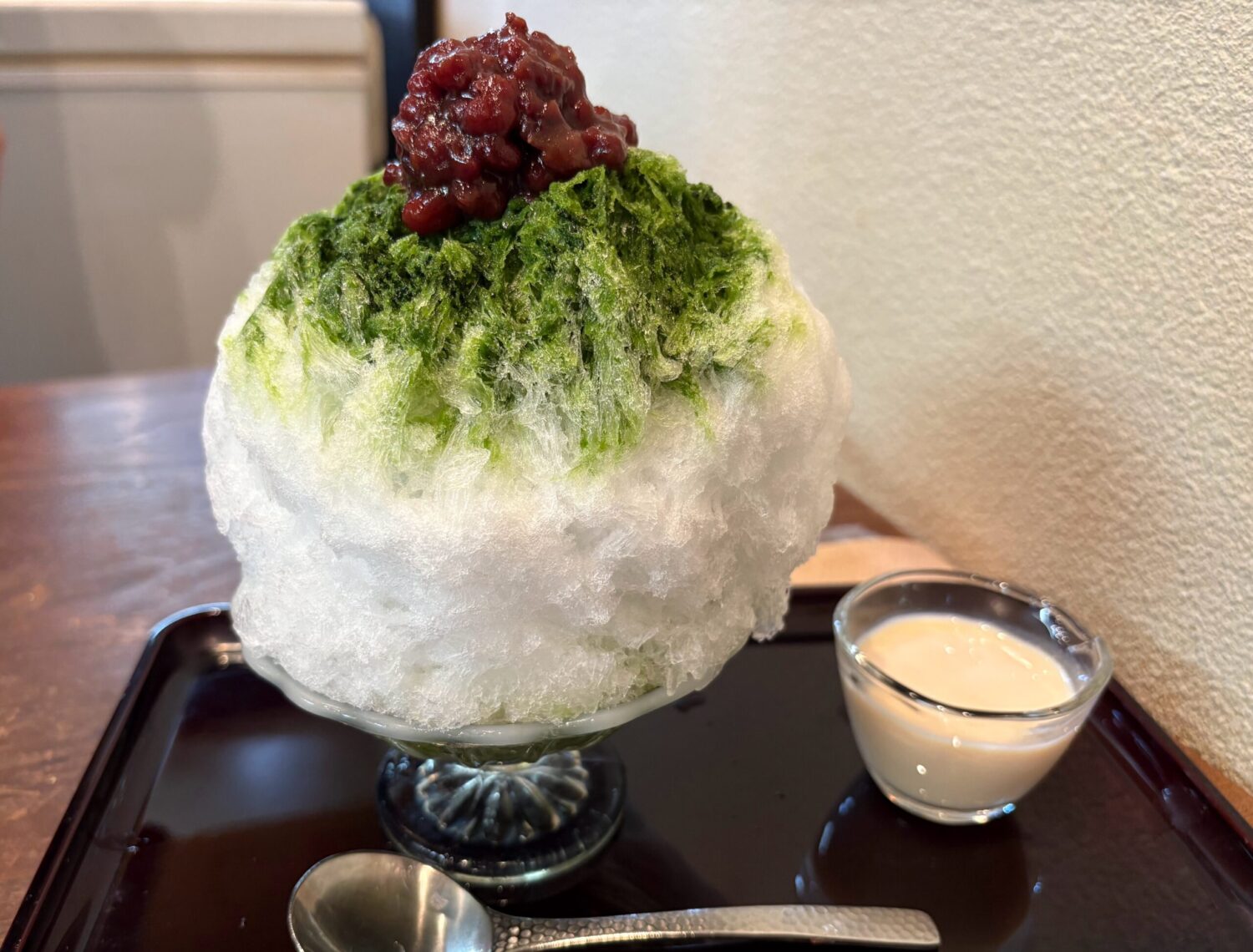Hello! I’m Fujiko.
If you’re planning a trip to Japan, don’t miss Asakusa—one of Tokyo’s must-visit destinations. Let me show you why!
There are countless charms to discover in Asakusa.
Strolling through Asakusa is like stepping into the past, yet its cheerful modern vibe makes the experience uniquely vibrant.
From cultural landmarks and tasty bites to dressing up in a kimono, Asakusa is full of fun experiences that make time slip away. Plus, it’s just a short walk from Tokyo Skytree—a perfect way to end your visit.
If you’re planning a quick two-night getaway and still wondering where to go—Asakusa is a must! It’s packed with charm, from nostalgic streets to modern vibes, and promises unforgettable memories.
Senso-ji Temple(Asakusa Kannon Temple)
Sensō-ji Temple, founded in 628 AD, is the oldest temple in Tokyo.
It welcomes millions of visitors each year, making it one of the city’s most iconic spiritual landmarks.
Kaminarimon Gate: Known for its iconic giant red lantern, this gate is believed to ward off evil spirits and welcomes visitors to the heart of Asakusa.
Nakamise Shopping Street: A charming temple approach lined with shops selling traditional Japanese sweets and crafts, offering a nostalgic taste of Tokyo’s old-town atmosphere.
Experience: Try drawing an omikuji (fortune slip) to discover your luck—just be warned, Asakusa’s fortunes are famously unpredictable!
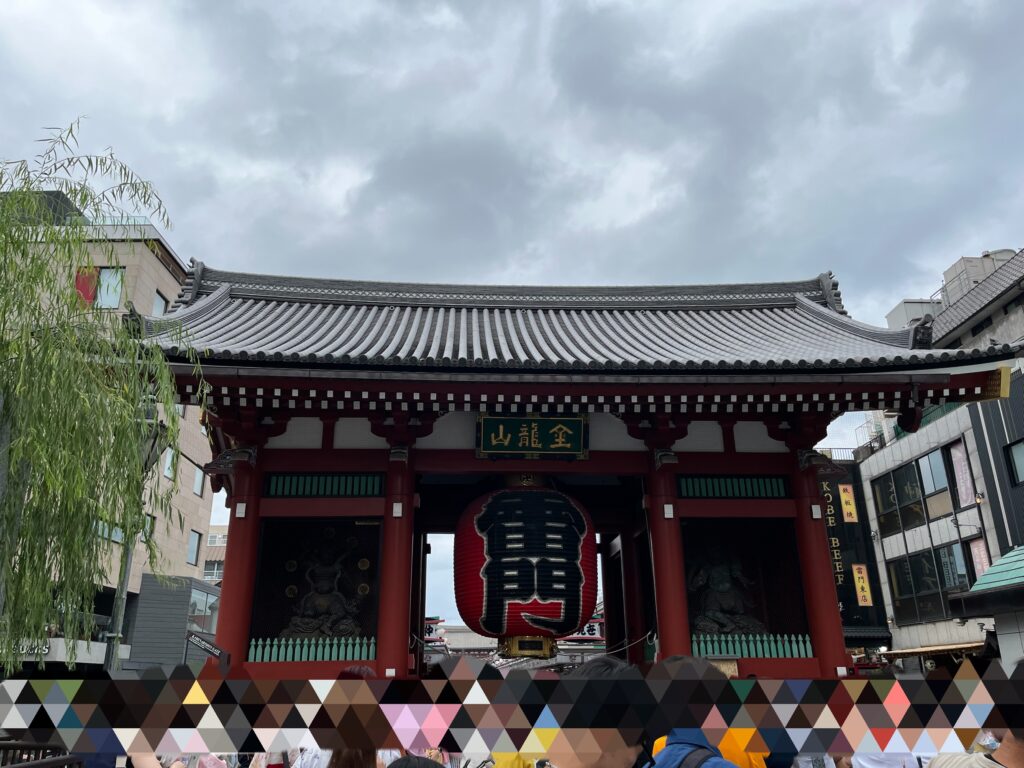
The Kaminarimon Gate is famous for its massive red lantern—so large, you can spot it from far away.
The gate is considered the entrance to Sensō-ji Temple, and the lantern hanging in the center reads “Kaminarimon,” which means “Thunder Gate.”
Standing on either side of the Kaminarimon Gate are two guardian deities from Buddhist tradition—Fūjin, the god of wind, on the right, and Raijin, the god of thunder, on the left.
The massive red lantern measures about 4 meters in height and weighs around 700 kilograms. It was donated by Konosuke Matsushita, the founder of Panasonic, who reportedly said that his health improved after praying at Sensō-ji Temple.

During the daytime, the area gets extremely crowded with people taking photos. If you prefer a quieter moment for photography, early morning—around 6:00 to 7:00 AM—is highly recommended.
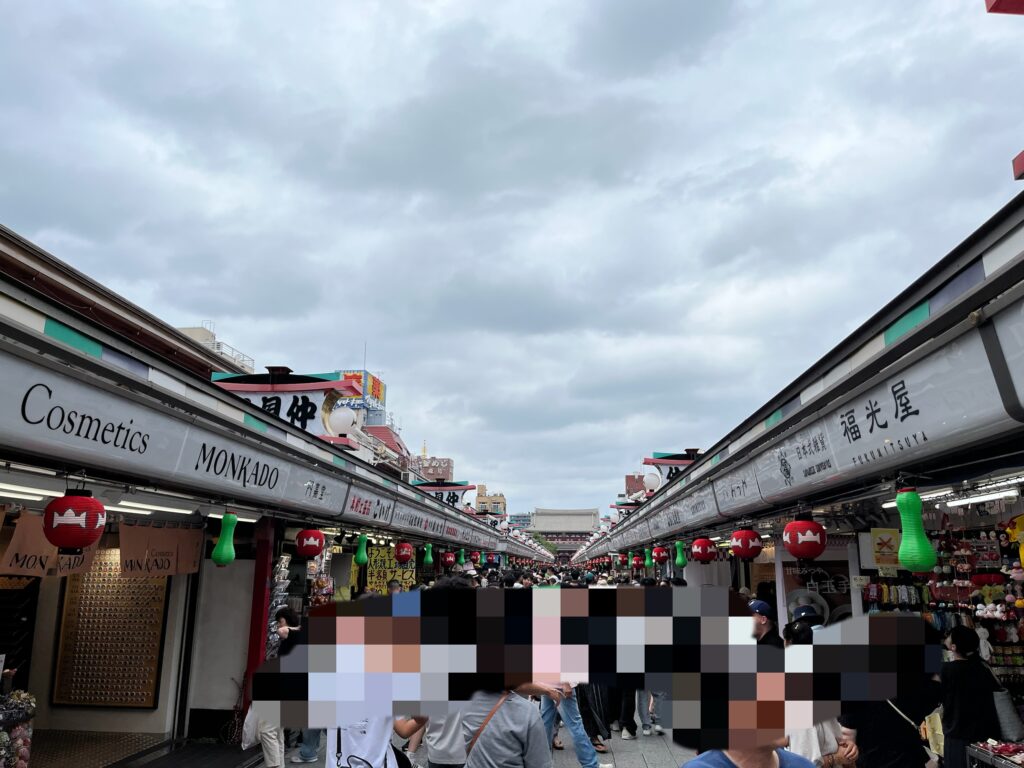
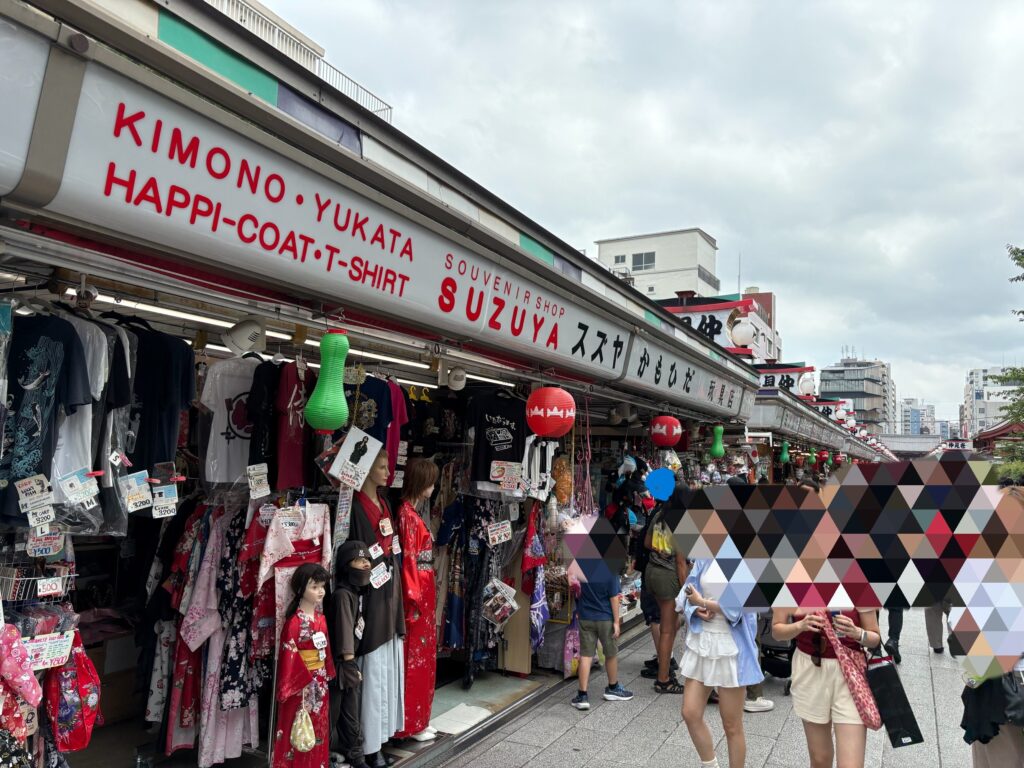
Nakamise Shopping Street is a 250-meter-long approach that stretches from the Kaminarimon Gate to Sensō-ji Temple.
It’s considered one of the oldest shopping streets in Japan, with nearly 100 shops offering traditional sweets and crafts.
The nostalgic atmosphere evokes the charm of old Tokyo, making it a beloved destination for visitors from near and far.

Asakusa is quiet in the morning but gets crowded at night—though the evening light-up is truly captivating. Renting a kimono and strolling through the streets is the perfect way to immerse yourself even deeper in the charm of Asakusa.
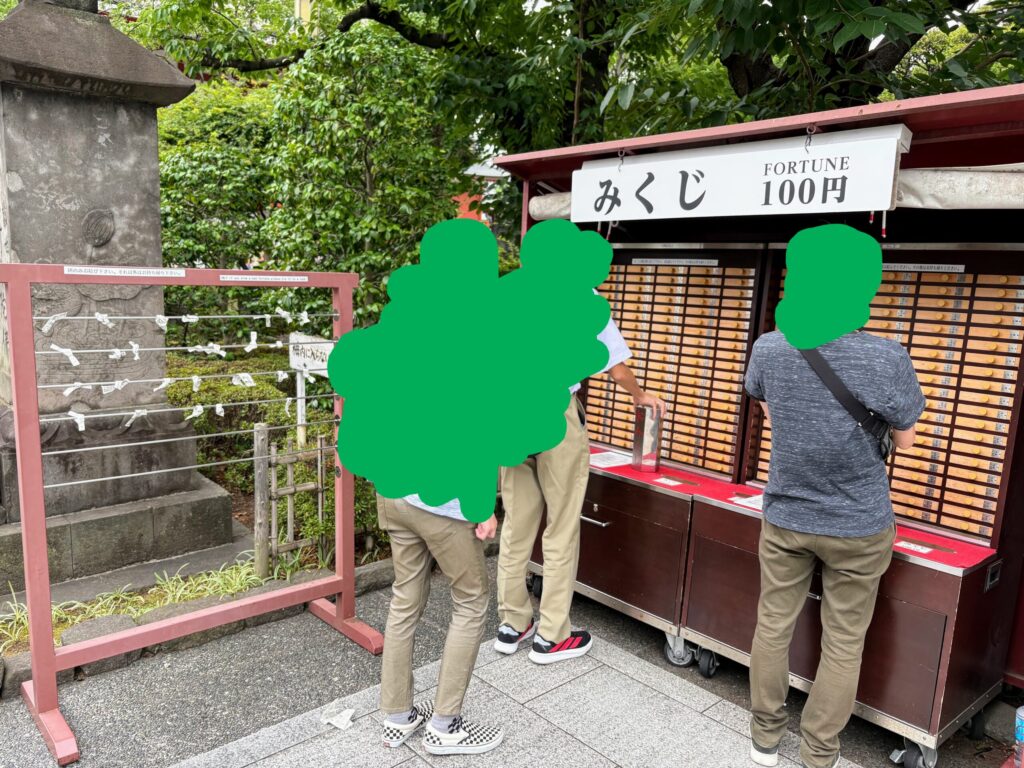
Omikuji are fortune-telling slips that you can draw at shrines and temples in Japan.
They reveal your luck in various areas such as health, love, wishes, and moving to a new place.
Omikuji at Sensō-ji Temple includes English translations, making it easy for international visitors to enjoy the experience.
It’s not easy to find omikuji with English explanations at most temples or shrines—so if you’re curious, Sensō-ji is the perfect place to give it a try!
How to Try Omikuji (Japanese Fortune Slips)
At most temples and shrines, you can draw an omikuji for around ¥100. Simply make a small offering, then pull a slip of paper from a box.
Your fortune will be ranked—something like “good,” “average,” or “bad”—but the real value lies in the message written below. It often includes advice about life, love, health, or work, so take a moment to read it carefully!
After Drawing an Omikuji
If your omikuji reveals a good fortune, many people choose to keep the slip and carry it with them as a personal charm. But if the fortune is bad, there’s a long-standing custom of tying it to a designated rack or branch near the omikuji stand—believed to help leave the misfortune behind.
Jinrikisha: The Human-Powered Rickshaw
Jinrikisha, or “human-powered rickshaws,” first appeared around 1870 and were once a common way for people to get around. But as trains and cars became widespread, they gradually disappeared from everyday life.
By the 1970s, however, jinrikisha began making a quiet comeback—this time as a charming way to explore scenic and historic areas. Today, they’re popular in sightseeing districts, offering a nostalgic glimpse into Japan’s past.
Feel the Ride: Only those who hop in can experience the gentle sway and refreshing breeze. You’ll hear the lively voices of the town around you, making it feel like a nostalgic journey through time.
The Shafu (Rickshaw Runner): Many shafu offer guided tours in English! You’ll discover hidden corners and stories of the town—even ones that most Japanese locals don’t know.
Memorable Photos: The traditional attire of the shafu and the vintage rickshaw itself are picture-perfect. You’ll take home a one-of-a-kind souvenir photo.
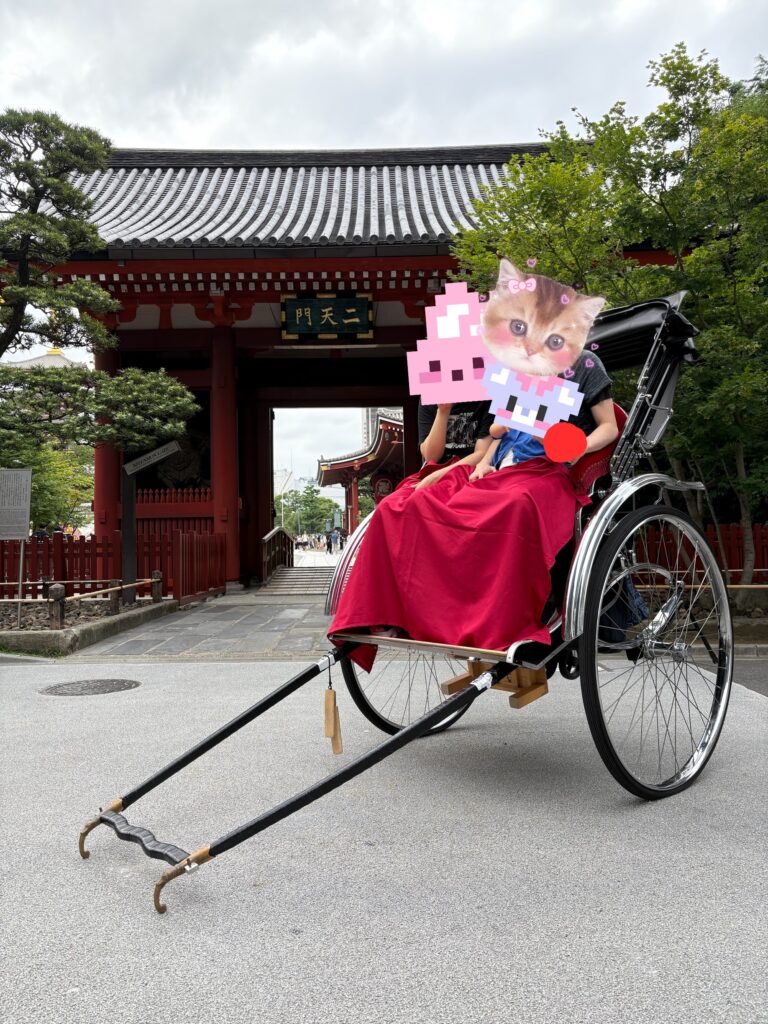
I truly recommend giving the jinrikisha experience a try. I sometimes go for a ride myself, and every time, I feel amazing—thanks to the refreshing breeze and the thoughtful, guided storytelling along the way.
And here’s a tip: don’t be shy about chatting with your shafu! They often know the best local eats and hidden gems—just ask, and you might end up somewhere delicious.
Naniwaya: Taiyaki & Kakigōri Delights
Naniwaya is well known for its taiyaki and kakigōri.
It’s a beloved shop with fans both in Japan and overseas.
Taiyaki: A classic Japanese confection shaped like a sea bream (tai), filled with sweet red bean paste. It’s a beloved traditional treat with roots going back generations.
Kakigōri: Light, fluffy shaved ice made from natural ice. The most popular flavor is called Asayake—a delightful blend of strawberry syrup, milk, and sweet red beans piled generously on top.
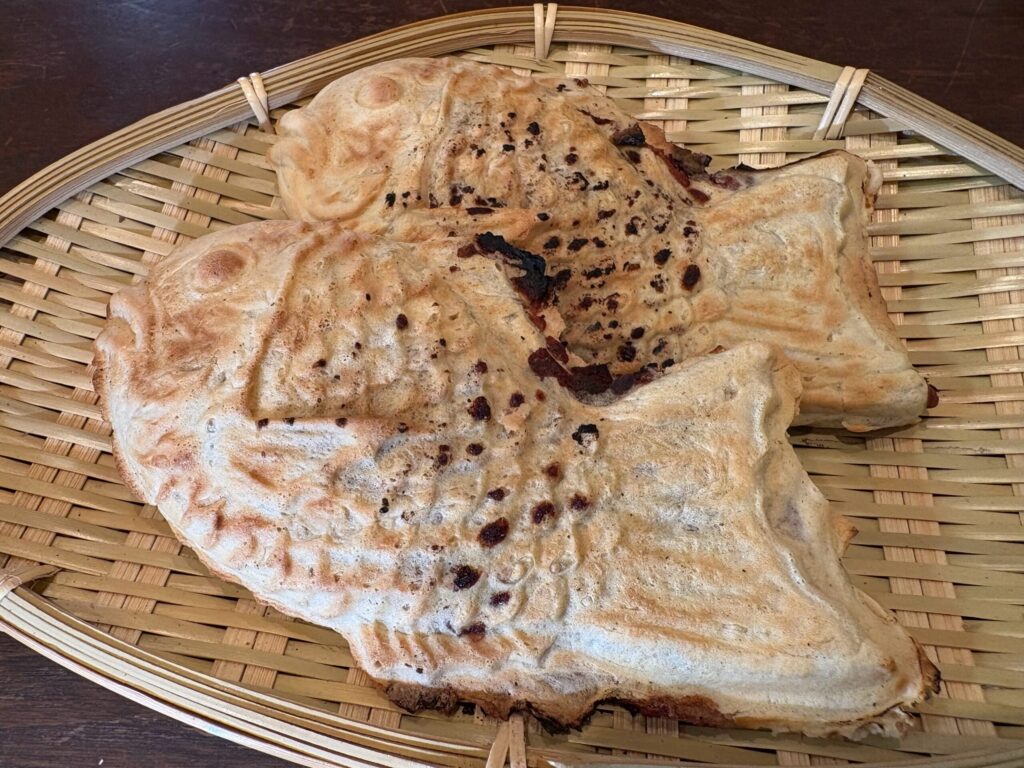
In Japan, sea bream (tai) is considered a symbol of good luck, and taiyaki—a traditional sweet shaped like this auspicious fish—carries that meaning.
Taiyaki can be found all across Japan, but the version from this particular shop is truly exceptional.
Its flavor is refined and not overly sweet, making it a popular choice to take home as a thoughtful souvenir.
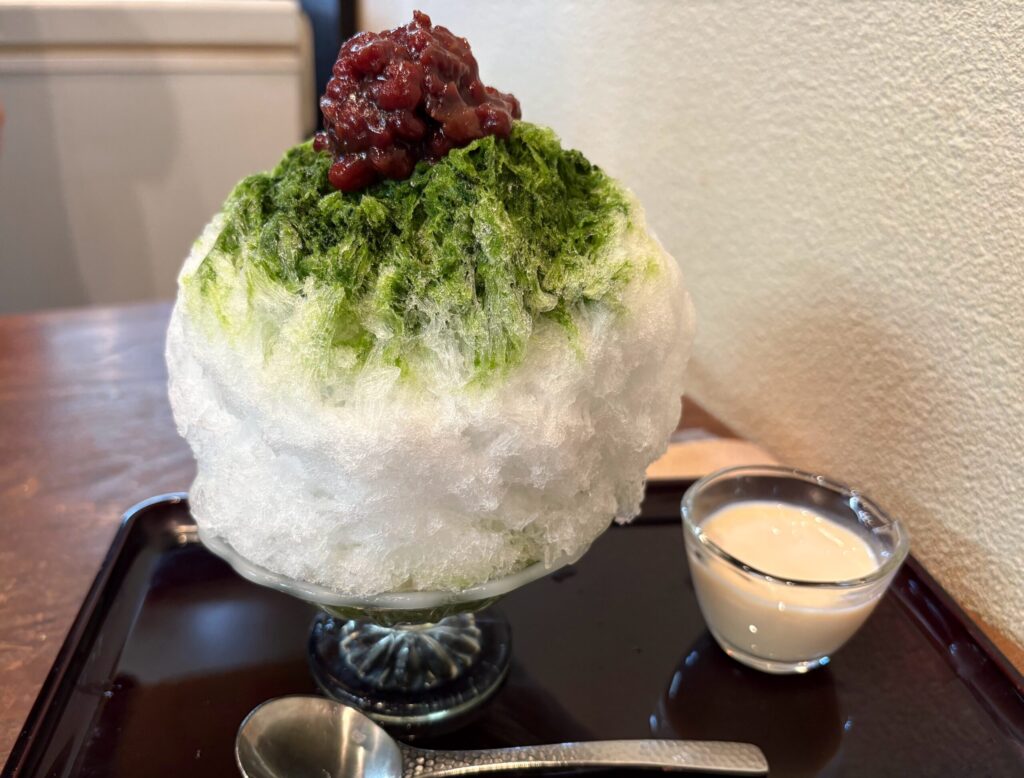
The photo shows Uji-Kintoki kakigōri topped with milk. With matcha and sweet red beans layered over the fluffy shaved ice, I poured milk over the top before digging in.
It’s a dreamy treat—soft, refreshing, and full of deep matcha flavor. No doubt, it’ll soothe your soul.
Whether you’re searching for the perfect taiyaki or savoring shaved ice on a summer stroll, or wandering through Tokyo’s hidden alleys in your thoughts—there’s always more to uncover. See you in the next post!

This is the kind of trip that really fills your heart.
So come hang out in Japan sometime—we’d love to have you!
